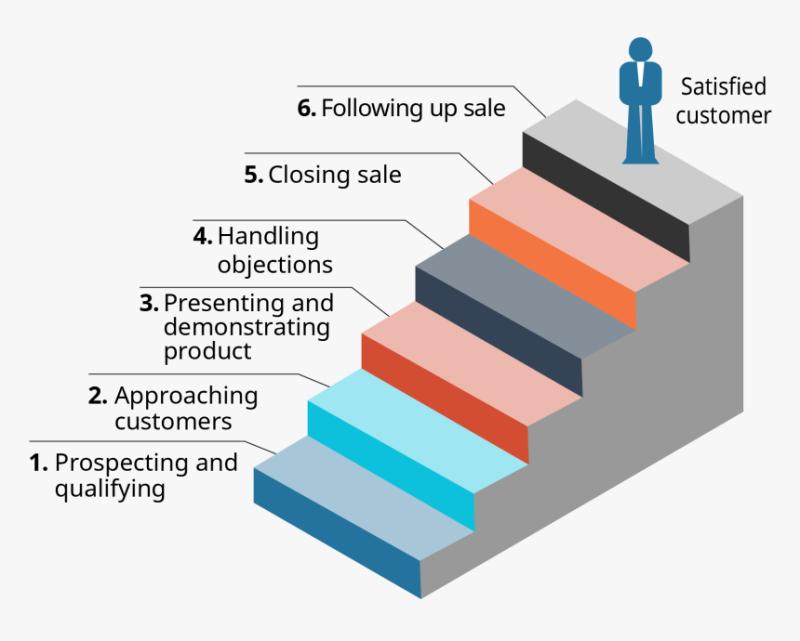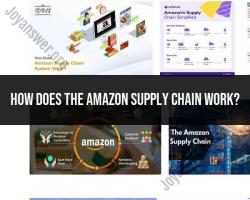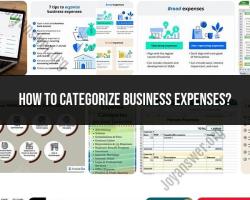What are the steps in the sale process?
The sales process involves a series of steps that a salesperson or a sales team follows to identify, qualify, and close a deal with a potential customer. While specific sales processes can vary among organizations, industries, and products, a typical sales process includes the following stages:
Prospecting:
- The first step in the sales process is prospecting, which involves identifying potential customers or leads. This can be done through various methods, including cold calling, networking, referrals, and online research.
Qualification:
- Qualification is the process of determining whether a prospect is a good fit for the product or service. Salespeople assess the prospect's needs, budget, authority to make a purchase decision, and other relevant factors.
Approach or Introduction:
- Once a lead is qualified, the salesperson makes the initial contact to introduce themselves and their product or service. This can be done through email, phone calls, in-person meetings, or other communication channels.
Needs Assessment:
- In this stage, the salesperson seeks to understand the prospect's specific needs, challenges, and goals. By asking questions and actively listening, the salesperson can tailor their solution to address the prospect's unique requirements.
Presentation:
- The presentation stage involves showcasing the product or service to the prospect. This can include demonstrations, product samples, slideshows, or any other method that effectively communicates the value proposition.
Handling Objections:
- Prospects may raise objections or concerns during or after the presentation. The salesperson addresses these objections by providing additional information, addressing concerns, or modifying the offer to better meet the prospect's needs.
Closing:
- The closing stage is where the salesperson asks for the prospect's commitment to move forward with the purchase. This can involve discussing terms, negotiating, and reaching an agreement on the terms of the sale.
Follow-Up:
- After the sale is closed, the salesperson engages in follow-up activities. This may include sending thank-you notes, providing additional information, ensuring customer satisfaction, and laying the groundwork for potential future business.
Post-Sale Relationship Building:
- Successful salespeople recognize the importance of building long-term relationships with customers. Post-sale relationship building involves ongoing communication, support, and efforts to add value to the customer's experience.
Referrals and Upselling:
- Satisfied customers can become advocates for the product or service, providing referrals to new potential customers. Additionally, salespeople may explore opportunities for upselling or cross-selling additional products or services to existing customers.
It's important to note that the sales process is not always linear, and different sales methodologies may emphasize certain stages or approaches. Additionally, advancements in technology have led to variations in how sales processes are executed, with the integration of CRM (Customer Relationship Management) systems and other tools.
Customizing the sales process to align with the specific needs of the industry, product, or service is common, and organizations often refine their sales processes based on feedback and performance metrics.
What are the essential steps in the sales process?
The essential steps in the sales process are:
- Prospecting: Identifying and qualifying potential customers.
- Preparation: Researching potential customers and developing a sales strategy.
- Approach: Contacting potential customers and introducing yourself and your product or service.
- Presentation: Demonstrating the value of your product or service to potential customers.
- Handling objections: Addressing any concerns that potential customers may have.
- Closing: Asking potential customers to buy your product or service.
- Follow-up: Thanking customers for their business and staying in touch.
How does the sales process vary across different industries?
The sales process can vary across different industries in a number of ways. For example, the sales cycle for a complex enterprise software solution may be much longer than the sales cycle for a consumer product. Additionally, the sales process may be more relationship-driven in some industries than others.
Here are some examples of how the sales process may vary across different industries:
- Technology: The sales process for technology products is often complex and lengthy, as it may involve multiple stakeholders and decision-makers.
- Manufacturing: The sales process for manufacturing products may involve more steps, such as product development, prototyping, and testing.
- Retail: The sales process for retail products is often shorter and more transactional.
- Services: The sales process for services may be more relationship-driven, as it is important to build trust with potential customers.
Are there key strategies for optimizing each stage of the sales process?
Yes, there are a number of key strategies for optimizing each stage of the sales process. Here are a few examples:
- Prospecting: Use a variety of prospecting methods, such as networking, outbound sales, and inbound sales.
- Preparation: Use customer relationship management (CRM) software to track and manage your leads and opportunities.
- Approach: Personalize your approach to each potential customer and tailor your pitch to their needs.
- Presentation: Use storytelling and data to demonstrate the value of your product or service.
- Handling objections: Be prepared to address common objections and have answers ready.
- Closing: Use a variety of closing techniques and be persistent.
- Follow-up: Thank customers for their business and stay in touch with them regularly.
By following these tips, you can optimize your sales process and increase your chances of success.
Here are some additional tips for optimizing each stage of the sales process:
- Prospecting: Use data-driven insights to identify your ideal customers and target them with relevant messaging.
- Preparation: Develop a deep understanding of your product or service and the benefits it offers to potential customers.
- Approach: Qualify your leads early on to ensure that you are spending your time on the most promising opportunities.
- Presentation: Use a variety of communication channels to reach your target audience, such as email, social media, and in-person meetings.
- Handling objections: Be patient and understanding when handling objections. Listen carefully to the customer's concerns and address them honestly and directly.
- Closing: Be confident and assertive when closing a deal. Ask for the sale directly and be prepared to follow up if necessary.
- Follow-up: Stay in touch with your customers after the sale to ensure that they are satisfied with your product or service and to identify opportunities for upsells and cross-sells.
By optimizing your sales process, you can improve your win rate and increase your revenue.













